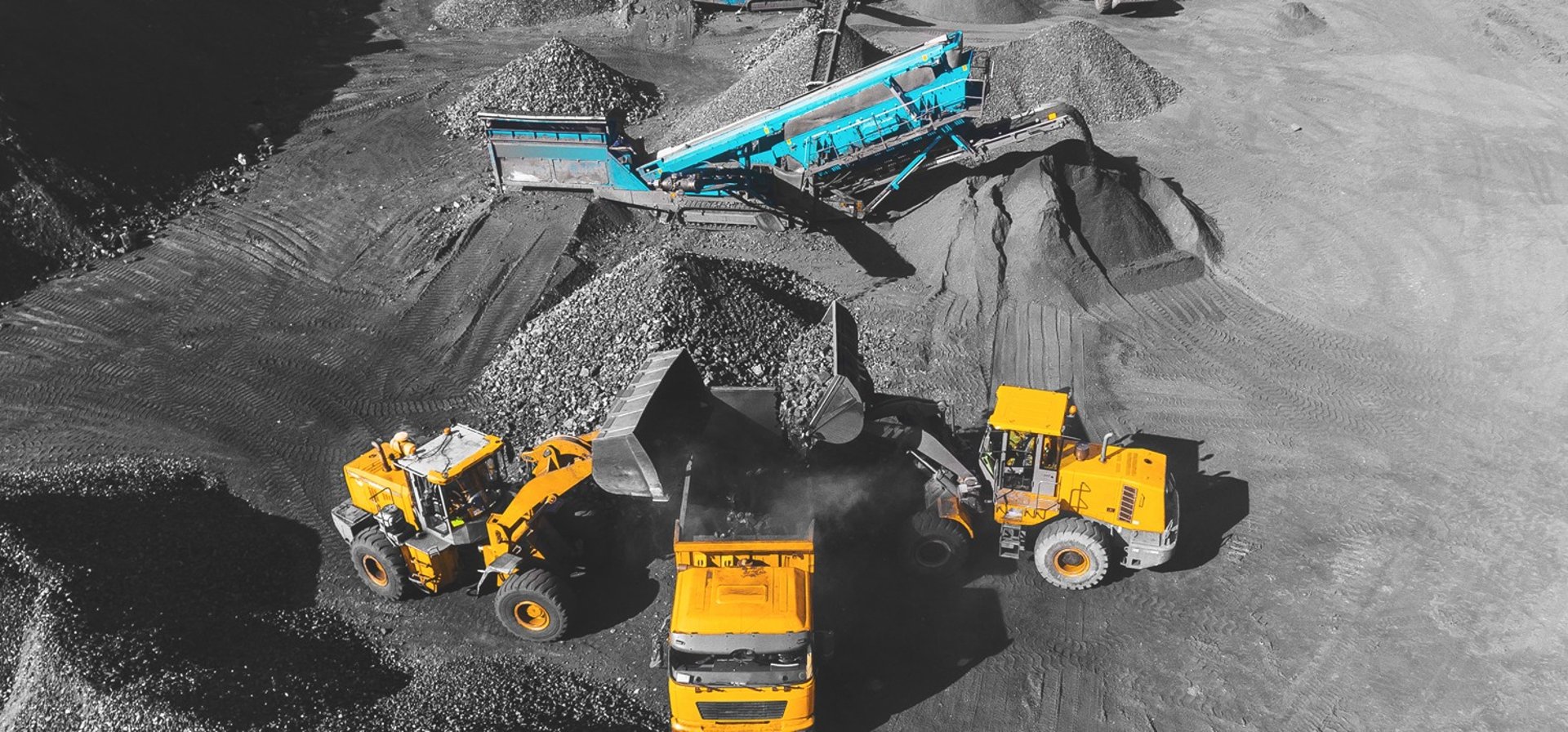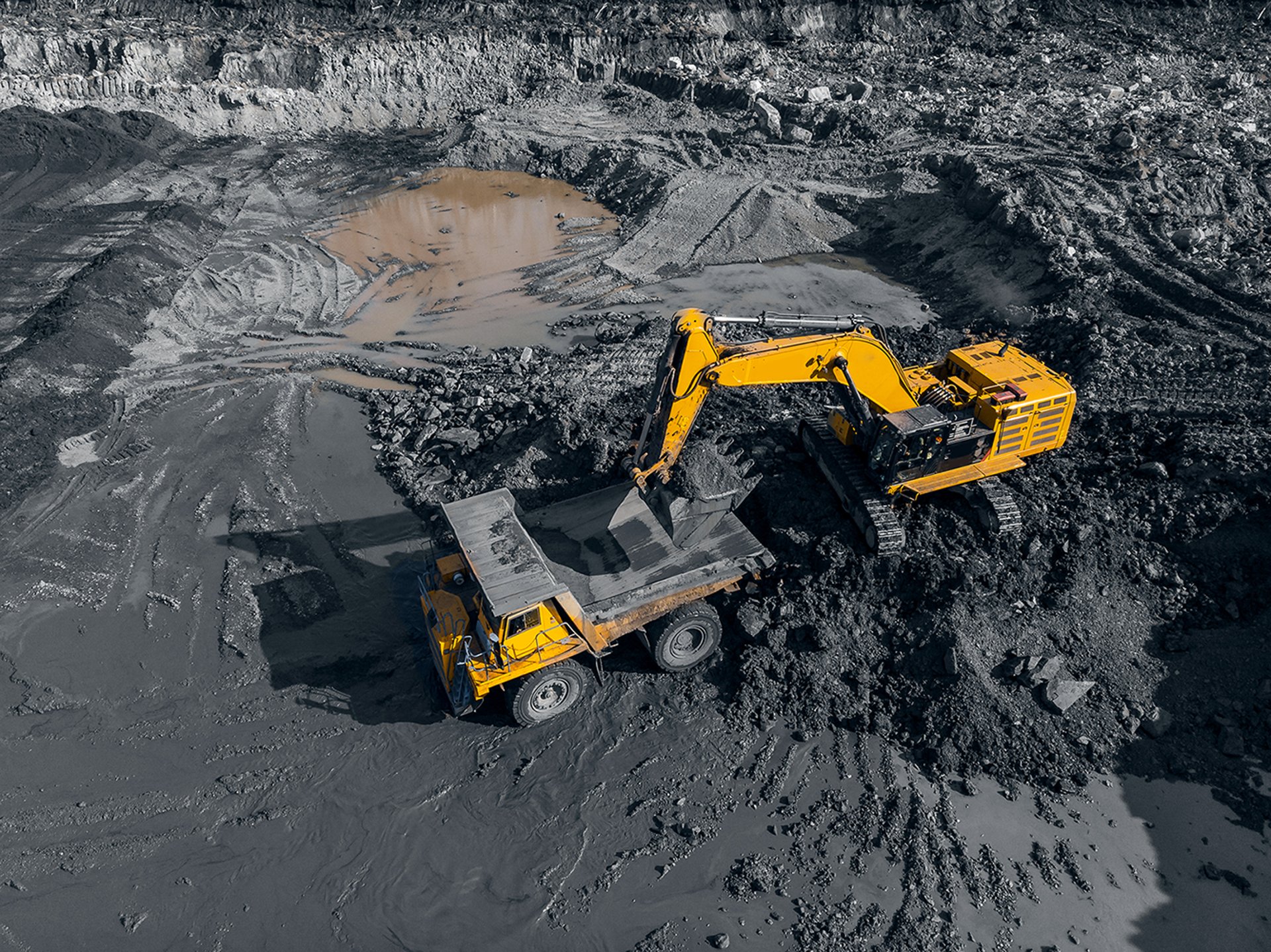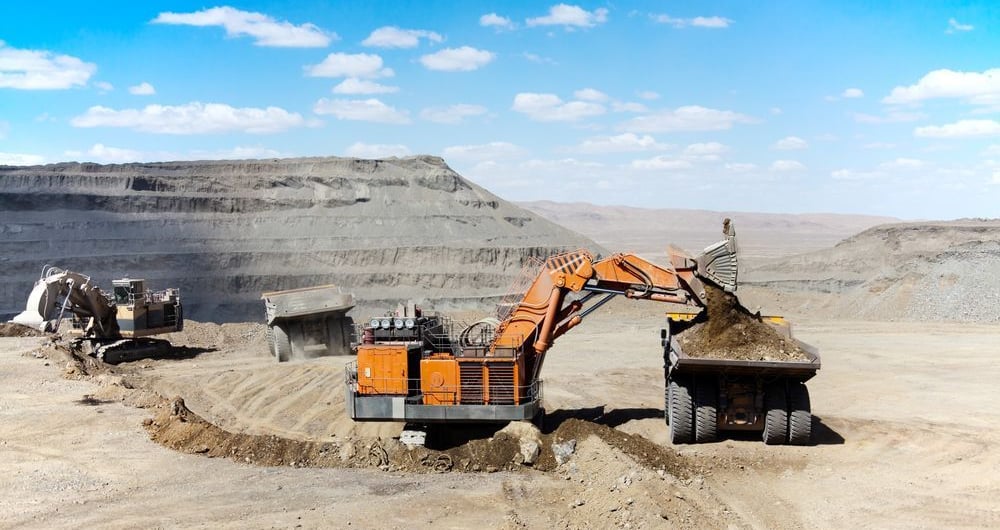Anhui Feichun Special Cable Co.,Ltd Li.wang@feichuncables.com

Unveiling the Depths: The Science and Sustainability of Open-Pit Mining
Explore the comprehensive world of open-pit mining, also known as opencast mining, delving into its technical processes, economic benefits, environmental impacts, social implications, and future innovations, with a special emphasis on South Africa's role in extracting key minerals like platinum and manganese.
Li. Wang
10/16/20257 min read



Introduction
Imagine standing on the rim of a colossal crater, gazing down into a yawning abyss where massive machines carve into the earth like mechanical behemoths. This is the scene at South Africa's Palabora Mine, one of the world's largest open-pit operations, stretching over 2 kilometres wide and delving nearly 800 metres deep. Here, tonnes of copper ore are extracted daily, fuelling global industries from electronics to construction. Such sights epitomise the sheer scale and ingenuity of open-pit mining, a method that has transformed resource extraction worldwide.
Open-pit mining, often referred to as opencast mining in South African parlance, is a surface mining technique employed to extract minerals and ores located relatively close to the earth's surface. Unlike underground mining, which involves tunnelling deep beneath the ground, open-pit mining creates vast excavations to access deposits, removing overlying material known as overburden. This approach is particularly suited for large, low-grade ore bodies where the valuable mineral forms only a fraction of the total rock mass.
What is Open-Pit Mining?
The roots of open-pit mining trace back to the latter part of the 19th century, when technological breakthroughs revolutionised mineral extraction. The introduction of flotation technology for base metals and cyanidation processes, including heap-leaching for gold, enabled the profitable treatment of low-grade ores. Prior to this, mining was highly selective, limited to high-grade deposits. By the 1920s, operations scaled up dramatically, with equipment capacities increasing tenfold—from 5 cubic metre shovels to modern giants handling 50 cubic metres or more. Transport systems evolved from rail to massive haul trucks, and in-pit crushing with conveyor belts emerged, enhancing efficiency.
A key distinction lies in its comparison to other methods. Quarrying, for instance, targets the rock itself as the primary product—such as granite or limestone—where nearly all extracted material is processed and sold. In contrast, open-pit mining deals with ores where the valuable mineral might constitute mere fractions of a percent, resulting in vast waste rock volumes. Underground mining, meanwhile, accesses deeper deposits via shafts and tunnels, but it requires leaving pillars for support, limiting full extraction and posing greater safety risks like roof collapses or gas hazards.
Globally, open-pit mining dominates for commodities like copper, gold, iron ore, diamonds, molybdenum, manganese, lead, zinc, uranium, coal, and industrial minerals such as borates and talc. In hard rock environments, it accounts for much of the world's output of these metals. South Africa stands out as a powerhouse, with opencast methods prevalent in the Bushveld Complex for platinum group metals, the Northern Cape for manganese and iron ore, and the Witwatersrand for gold remnants. The country's mining sector, employing hundreds of thousands, extracts millions of tonnes annually, underscoring its economic backbone while highlighting the need for context-specific adaptations to local geology and regulations.
How Open-Pit Mining Works: Technical Perspective
The journey begins with site preparation, a meticulous phase where vegetation and topsoil are stripped away to expose the ore body. Probe holes are drilled to evaluate the deposit's extent, quality, and geometry, informing the mine plan. Overburden—barren rock overlaying the ore—is then removed, often in layers, to access the mineral-rich zones.
Operational stages form the core of the process. Drilling creates blastholes on a grid pattern, considering hole diameter, burden (distance between rows), and spacing. High-performance rigs like the SmartROC D65 are used for blasthole and presplit drilling, the latter enhancing pit wall stability. Blasting follows, employing explosives such as ANFO or emulsions to fragment the rock. Excavation involves loading the broken material with hydraulic excavators or rope shovels—modern units boasting buckets up to 50 cubic metres. Transportation relies on haul trucks, some with 400-tonne capacities, navigating ramps to processing plants or waste dumps.
Infrastructure design is critical for safety and efficiency. Pits are excavated in benches, with walls sloped at angles to prevent avalanches—the incline termed the 'batter' and the flat step the 'bench' or 'berm'. Bench heights vary: 1.5 metres for loose material, 3 metres for coal, and up to 12 metres in hard rock for mechanised operations. Haul roads, with gradients not exceeding 1 in 10, facilitate truck movement. De-watering bores relieve water pressure, while waste dumps are tiered to contain erosion. Tailings ponds store processed waste, often toxic due to sulfides.
Manual methods persist in smaller South African operations, using picks for soft overburden and jackhammers for hard rock, with teams of three to four workers handling 4.5-metre plots. Output averages 2.8 cubic metres per worker daily in soft material. Mechanised approaches dominate larger sites, employing draglines, power shovels, and conveyor systems, allowing for broader benches (15 metres wide) and higher productivity. In coal seams, blocks are divided along the strike, with witness pillars for measurement, ensuring systematic extraction.
Benefits and Economic Perspective
Open-pit mining's advantages are manifold, making it a cornerstone of modern resource extraction. It enables mass production with ease, requiring minimal shutdown expenses and allowing selective mining for specific ore grades. Crew sizes remain small compared to underground operations, eliminating hazards like complex ventilation or roof control. Machinery faces no restrictions, accommodating heavy equipment, and subsurface water drains naturally. Capital and operating costs are lower, with quick returns on investment—no lengthy shaft sinking delays.
Economically, it generates substantial impacts. In Australia and the US, operations like the Super Pit and Bingham Canyon yield millions of tonnes yearly, creating jobs and boosting local economies. South Africa's Kumba Iron Ore, for instance, extracts vast quantities of iron ore via opencast methods, contributing to export revenues and employing thousands. The CDC notes active US mines including 278 metal operations, many open-pit, paralleling South Africa's scale.
Efficiency shines through high output per worker—natural light and unconfined spaces yield superior oms (output per man-shift). Full mineral extraction occurs without leaving pillars, and production adapts swiftly to market fluctuations or wagon supplies. Training is straightforward, and mechanisation at high voltages enhances productivity, underscoring why opencast mining dominates for surface-near deposits.
Environmental Impacts: A Critical Analysis
Despite its benefits, open-pit mining inflicts profound environmental tolls. Ecosystems suffer disruption from vegetation removal and habitat loss, altering biodiversity. Hydrology changes dramatically—pits lower groundwater levels and disrupt drainage, necessitating de-watering bores and berms to curb erosion. Acid mine drainage emerges when sulfides oxidise, releasing sulfuric acid and heavy metals into water and soil, posing long-term risks.
Waste management is a flashpoint. Overburden piles into tiered dumps, spreading horizontally and vertically, while tailings—processed ore residues—are pumped into ponds that can leach toxins. In South Africa, where sulfide-rich ores abound, improper handling exacerbates contamination, affecting rivers and agriculture.
Rehabilitation is mandatory for mitigation. Post-operations, dumps are contoured and stabilised; sulfide-bearing waste is clay-covered to prevent oxidation. Soil is layered, vegetation replanted, and areas fenced against livestock. Over time, pits fill with groundwater, though deep levels may require ongoing management. Regulatory frameworks, like South Africa's Mine Health and Safety Act, mandate plans ensuring land restoration for future use, such as agriculture.
Long-term studies are vital, monitoring hydrological shifts and pollutant dispersal. Sustainable practices, including erosion controls and waste minimisation, are increasingly adopted to balance extraction with environmental stewardship, drawing from global examples where restored sites support wildlife.
Social and Safety Perspectives
Worker safety in open-pit mining surpasses underground methods, with no risks of gas explosions or confined spaces. Protocols include rigorous training, personal protective equipment like helmets and harnesses, and emergency plans. Regular inspections address hazards from falling rocks or machinery. In South Africa, the Mines Act limits female workers' hours, ensuring better sanitary conditions and family employment opportunities.
Communities experience mixed effects. Positively, jobs and economic boosts invigorate local areas—South African mines like those of Kumba Iron Ore provide livelihoods for thousands. Negatively, dust, noise, and pollution degrade health, as per CDC reports on US mines. Displacement and environmental degradation spark concerns, necessitating consultations and compensation.
Case studies illustrate this duality. Bingham Canyon's scale drives US economies but demands robust safety audits. Australia's Super Pit employs advanced traffic management to curb community risks. In South Africa, platinum operations involve stakeholder engagements, mitigating impacts through haul road designs and pollution controls, fostering social licence.
Challenges and Disadvantages
Operational drawbacks abound: weather hampers work—rain halts extraction, winter and summer extremes lower efficiency. Land is rendered unfit for agriculture, with pits and dumps scarring landscapes. Deep deposits prove uneconomic, and surface rights acquisition complicates leases, unlike underground rights.
Regulatory issues demand ethical leadership—South African laws require rehabilitation plans, compensation for affected fields, and distancing from residences (beyond 300 metres for blasting). Corporate transparency builds trust, addressing low oms in manual methods and visual blight.
Broader concerns include quick-return focus depleting high-quality outcrops first, and monsoon suspensions in inclined seams. Without restoration mandates like some foreign laws, marshy or eroded lands persist, underscoring the need for holistic management.
The Future of Open-Pit Mining
Technological strides promise transformation. Automation and electric equipment, like battery-powered haul trucks, reduce emissions and enhance safety. In-pit crushing and higher-capacity rigs optimise operations, while AI-driven planning minimises waste.
Sustainability will dominate, with innovations in waste management—bioremediation for acid drainage—and renewable integration, like solar-powered drills. Resource reclassification via tech advances or price rises expands reserves, as seen in porphyry copper deposits.
Globally, trends favour critical minerals for green tech, with South Africa poised to lead in manganese for batteries. Fluctuating markets demand adaptability, ensuring opencast mining evolves responsibly to meet demands while curbing footprints.
Frequently Asked Questions (FAQs)
What materials are commonly extracted using open-pit mining?
Open-pit mining commonly extracts copper, gold, iron ore, coal, diamonds, molybdenum, manganese, lead, zinc, uranium, bitumen, clay, coquina, granite, gypsum, limestone, marble, silver, phosphate, and industrial minerals like borates and talc.
How does open-pit mining differ from underground mining?
Open-pit mining is a surface technique creating open excavations for near-surface deposits, offering easier access, lower costs, and fewer hazards like gas explosions. Underground mining uses tunnels for deeper ores, requiring ventilation, support pillars, and posing greater risks.
What are the main environmental risks associated with open-pit mining?
Key risks include ecosystem disruption, hydrology alterations (groundwater lowering, drainage changes), acid mine drainage from sulfides, pollution from tailings and waste dumps, heavy metal releases, and erosion leading to sedimentation.
How is land rehabilitated after open-pit mining operations end?
Rehabilitation involves contouring waste dumps, covering sulfides with clay to prevent acid drainage, adding soil, planting vegetation, and fencing areas. Pits fill with groundwater, aiming to restore land for agriculture or wildlife, per regulatory plans.
What safety measures are in place for workers in open-pit mines?
Measures include training programs, personal protective equipment (helmets, harnesses), regular inspections, emergency protocols, and machinery operation guidelines. Reduced hazards compared to underground mining, with better ventilation and no gas risks.
How does open-pit mining impact local communities?
It creates jobs and economic growth but can cause environmental degradation, displacement, dust/noise pollution, and health issues. Community consultations, compensation, and mitigation like haul road management address negatives.
What is the future outlook for open-pit mining technology?
The future features automation, electric equipment, in-pit crushing, and AI for efficiency. Emphasis on sustainability includes better waste management and renewables, supporting critical minerals for green tech amid fluctuating markets.

Email Address: Li.wang@feichuncables.com
© 2025. All rights reserved.


One-click to Quickly Contact
Products
Offshore & Marine Cable
XLPE Cable
Contact
Company
Location:
Building A Private Science and Technology Park, Hefei Economic and Technological Development Zone, Anhui Province, China
